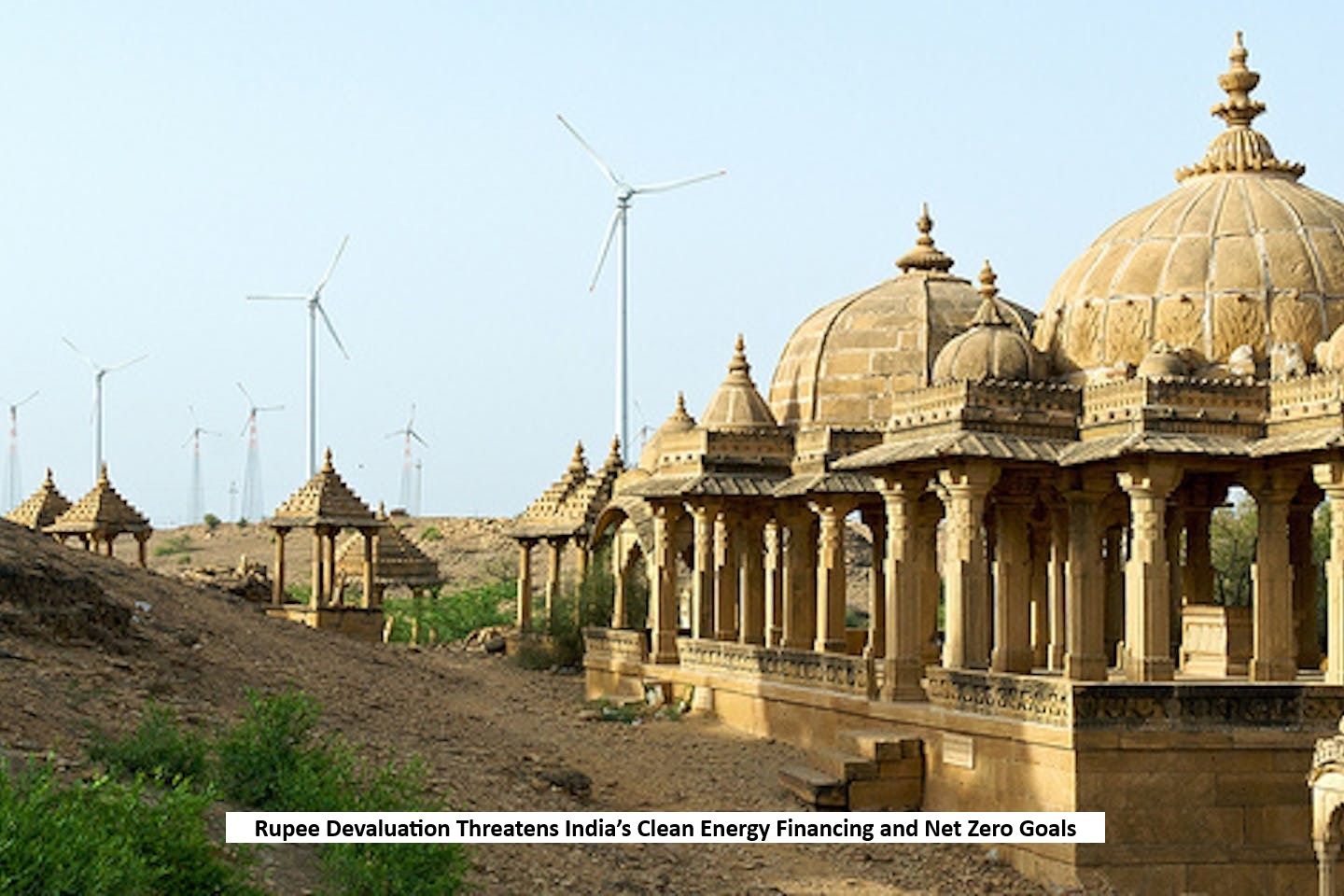
India needs over $10 trillion in capital over the next 25 to 45 years to reach its net zero emissions target by 2070, which translates to an annual requirement of $150 to $200 billion. Although domestic efforts to mobilize funding continue, foreign capital remains critical to bridge this significant financing gap.
Rupee Weakening Complicates Capital Inflows
Recent depreciation of the Rupee is complicating efforts to attract foreign investment in India’s clean energy sector. Between October 2024 and January 2025, the Rupee dropped by 3.2%, exceeding its historical annual average depreciation rate. This volatility increases financing risks and deters potential investors looking to back clean energy projects.
Currency Mismatch Increases Project Risks
Most clean energy financing in India involves long-term foreign capital and debt. Since revenues are generated in INR while repayments are made in foreign currencies, even small shifts in currency value raise the cost of repayments. This currency mismatch can make large-scale clean energy investments commercially unviable.
Imported Technologies Become Costlier
India continues to rely on imports for solar panels, batteries, and critical minerals. A weaker Rupee increases the cost of these technologies, adding pressure on developers. With long asset life cycles and locked-in capital costs, currency depreciation raises barriers for foreign-funded clean energy projects.
Investor Hesitation and Higher Capital Costs
Currency instability also makes India a riskier destination for foreign investors. The result is reduced capital inflow and increased borrowing costs. Both factors hinder the country’s ability to scale up its clean energy initiatives.
Hedging Exists But Isn't Feasible for All
Although financial tools like currency swaps and options exist to manage currency risk, they are expensive and only available for short durations (up to seven years). Many clean energy firms, especially smaller ones, lack the financial backing to afford hedging or secure better terms.
Subsidizing Hedging Costs Could Ease Financing
Subsidizing the cost of currency hedging could make it easier for developers to raise foreign capital. Government bodies, multilateral banks, and climate finance mechanisms can play a key role in providing this support. Their stronger credit ratings can also help negotiate better swap terms, lowering costs for smaller Indian firms.
Stabilizing the Currency Market Is Crucial
To meet its 2030 climate targets, India must maintain steady foreign capital inflows. While the Reserve Bank of India is working to stabilize the Rupee, long-term solutions include institutional support to manage currency risks and incentivize clean energy financing.

 Share
Share



